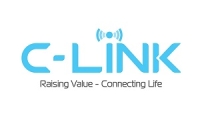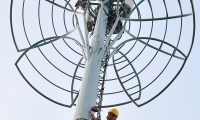- Trang chủ
- Về chúng tôi
- Sản Phẩm
- ETHERNET SWITCH
- SDH/MSPP MULTIPLEXER
- PDH Fiber Optical Multiplexer
- PCM Multiplexer/Fom
- TDM Over IP
- IP Over TDM
- Microwave Radio Products
- Media Converter
- Protocol Converter
- Module Quang
- Măng Xông Quang
- Phụ Kiện Quang
- Dây Nhảy Quang
- Tủ, Hộp Phối Quang (ODF)
- Bút Soi Quang
- Tủ Mạng
- CPE FTTH
- Thiết Bị Truyền Hình Cáp CATV
- RS232 – RS485 – RS422
- WLAN
- Bộ Thu Phát Video Quang
- Dịch vụ
- Tin tức
- Hỗ Trợ
- Liên Hệ
Trang chủ»About FTTH
About FTTH
What is Fiber to the Home?
Fiber to the Home (FTTH) is an access network method that delivers the highest possible speed of Internet connection by using optical fibrer that runs directly into the home, building or office.

FTTH is unique, because it removes all the bottlenecks that slow the performance of other types of network. With FTTH, you can download files at least 10 times faster than with, for example, ADSL networks. You can upload files, such as family photos, at almost the same speed as downloading
FTTH gives consumers access to a large choice of interactive applications, such as video communication with friends, family and colleagues, gaming, video-on-demand, teleworking and eHealth.
It is not just about technology, or about accessing the Internet faster. FTTH opens the door to a whole range of new services, delivered right to the home or office.
Why we need fiberr
FTTH is the only type of fixed-line access network solution that is truly proofed against all future developments and eventualities, therefore the only one that it makes sense to invest in where a new network is being deployed.
FTTH offers vastly higher bandwidth and better access to new types of service than other access options, and is the only network option suited to deliver the future economic growth that our information-led economies and communities demand. It is furthermore more reliable and cheaper to operate than alternatives.
There are pressing environmental reasons why fibre access matters too. The reduced energy needed to build and run fiber networks, and the new services fibre makes possible, such as allowing more people to work from home, mean a lower carbon footprint as well.
Network operators can also upgrade the network and increase bandwidth simply, enabling them to deploy such a network without fear of having to rip it up and start again in a few years.
The impact of FTTH on society and the environment
If economic success is to be achieved and progress realised, then we must all be sensitive to environmental and social as well as commercial demands.
Fiber optic connections to the home help lay their part here, by improving people’s lives at the same time as enabling green economic development. FTTH contributes greatly to regional economic growth wherever it goes, and it has a part to play in reducing our consumption of energy.
FTTH enables a range of value-added services to be delivered straight to the end user, and improving and enriching their quality of life by connecting them to the world at high speed.
Persons living in a rural area, for example, can save themselves a long drive twice a day by working from home instead of using their car to get to the office. Broadband over fibre has the power to bring all the work resources they need into their home office. Top quality medical advice can be delivered online right into the home, saving an unnecessary trip to hospital in the event of a minor illness.


















